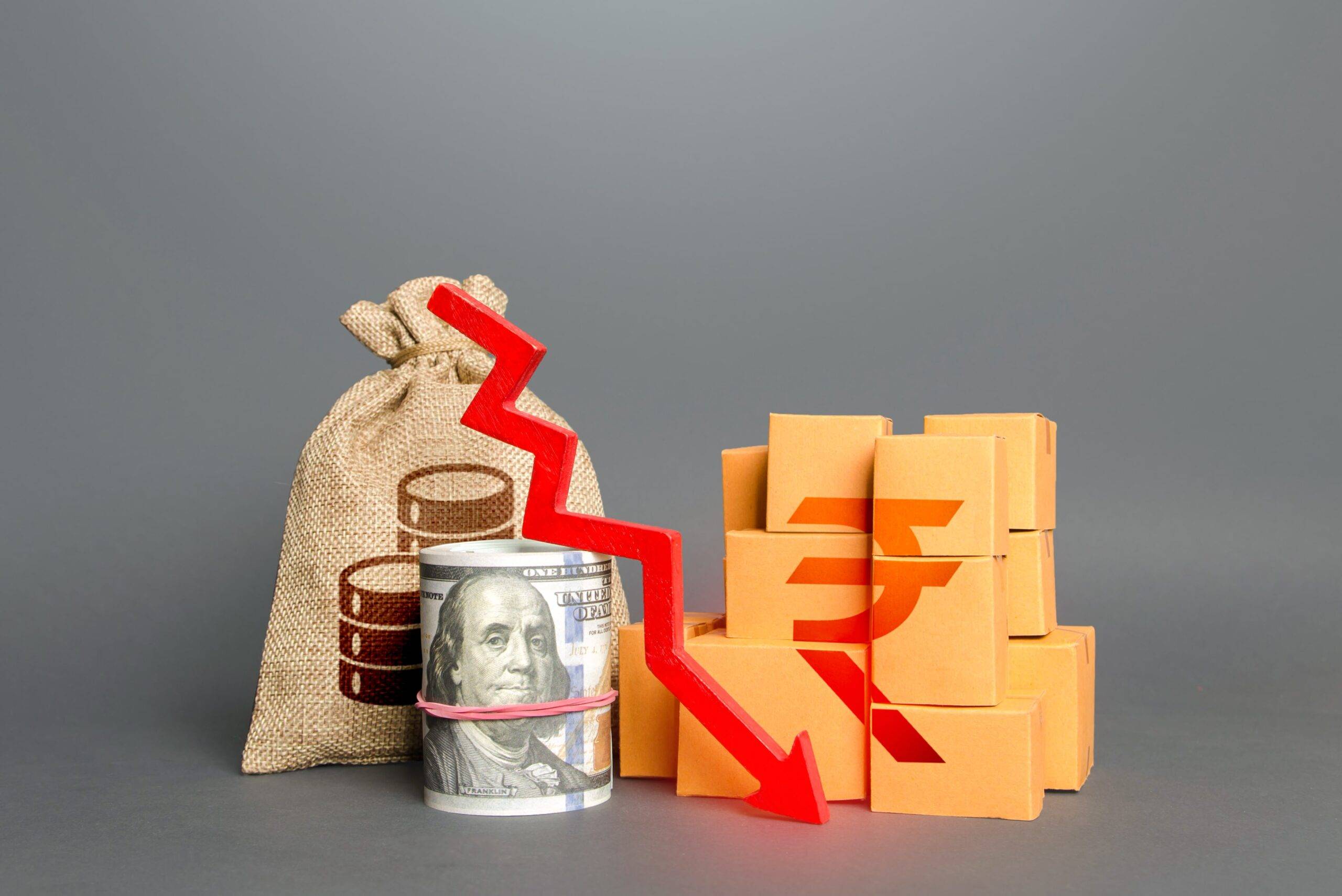The Indian economy is facing a new challenge as the rupee hits record low of 87.58 against the US dollar. This steep fall has left traders, investors, and policymakers on edge. The depreciation of the Indian currency has been fueled by growing concerns over a potential RBI rate cut and uncertainties in global trade. As the USD/INR exchange rate continues to weaken, markets are witnessing panic-driven reactions.
Experts believe that the downward trend of the rupee is being driven by multiple factors, including a rise in dollar demand, speculative forex market trends, and concerns over global trade relations. This sudden fall has also intensified worries about the Indian economy, as importers scramble to secure dollars, fearing further depreciation.
Why Did the Rupee Hit a Record Low?
There are several key reasons behind the sharp decline in the USD/INR exchange rate:
- Speculation about an RBI rate cut: The Reserve Bank of India is expected to ease monetary policy to support economic growth. However, lower interest rates often weaken a currency.
- Global trade war fears: The ongoing tensions between major economies like the United States and China have added uncertainty to the forex market trends. This has resulted in investors seeking safer assets, like the US dollar.
- Foreign banks buying dollars: Many foreign financial institutions have been aggressively purchasing dollars, further weakening the rupee.
- Weak economic indicators: Recent economic data suggests slowing growth in India, with lower industrial output and declining foreign direct investment.
Impact on Indian Businesses and Consumers
As the rupee hits record low, the effects are being felt across industries and among consumers. A weaker rupee makes imports more expensive, which affects sectors that rely on foreign goods and raw materials.
- Oil Prices: India imports over 80% of its crude oil. A depreciating rupee increases the cost of oil, leading to higher fuel prices.
- Electronics and Automobiles: Products like smartphones, laptops, and cars could become more expensive due to increased import costs.
- Education and Travel: Students studying abroad and international travelers will have to spend more as exchange rates become unfavorable.
Local businesses that rely on imported goods may struggle to keep prices stable. If the trend continues, inflation could rise, putting more pressure on household budgets.
Forex Market Trends and Investor Sentiment
The forex market trends indicate that investors are pulling money out of emerging markets like India and moving towards safer assets. The strength of the US dollar has made it a preferred investment, leading to further depreciation of the Indian currency.
The USD/INR exchange rate has been volatile over the past few months. Many traders had anticipated the possibility of an RBI rate cut, which further drove speculation in the forex market. In times of uncertainty, investors often look for stability, and the US dollar has emerged as the strongest currency globally.
Government and RBI’s Response
The Indian government and the Reserve Bank of India are closely monitoring the situation. While the RBI has not yet intervened directly in the forex market, it may take steps to stabilize the currency.
Possible measures include:
- Foreign exchange reserves utilization: The RBI could sell dollars from its reserves to prevent excessive depreciation.
- Interest rate adjustments: While an RBI rate cut could stimulate the economy, it may also accelerate the fall of the rupee. A balanced approach is needed.
- Stronger capital controls: The government may introduce policies to restrict excessive dollar outflows and encourage foreign investment.
How Will This Affect the Common Citizen?
The weakening rupee is not just a concern for businesses; it also affects everyday people in multiple ways.
- Rising fuel prices: As the rupee falls, oil imports become more expensive, leading to higher fuel prices. This, in turn, increases transportation costs.
- Inflation: Imported goods, including food products and consumer electronics, will see a price rise. This impacts household expenses.
- Costlier travel and education: Indians traveling abroad or studying in foreign universities will have to shell out more for tuition fees and living expenses.
- Higher loan burdens: If inflation rises due to rupee depreciation, banks may increase interest rates on loans. This would make borrowing more expensive for consumers and businesses alike.
Will the Rupee Recover Soon?
Market experts are divided on whether the rupee will regain strength in the near future. Some believe that if the RBI intervenes effectively, the currency may stabilize. Others argue that global economic conditions, coupled with India’s domestic challenges, could keep the rupee under pressure.
A few factors that could help the rupee recover include:
- Strong foreign investments: If global investors regain confidence in India’s economy, capital inflows could strengthen the rupee.
- Stable economic policies: A clear and strong policy direction from the government can restore market confidence.
- Global trade stability: If tensions between the US and China ease, emerging market currencies like the rupee may see some relief.
Conclusion
The fact that the rupee hits record low is a major concern for investors, businesses, and ordinary citizens. The depreciation of the currency has been fueled by speculation about an RBI rate cut, global trade uncertainties, and forex market trends. The impact is already visible in rising import costs, inflation concerns, and a weaker economic outlook.
The government and RBI need to take decisive action to prevent further Indian currency depreciation. Market stability, foreign investment, and policy decisions will play a crucial role in determining whether the rupee can regain its strength. Until then, businesses and consumers must prepare for the financial challenges ahead.
Click here to read our latest article What Is Quantitative Easing and How Does It Affect the Economy?




